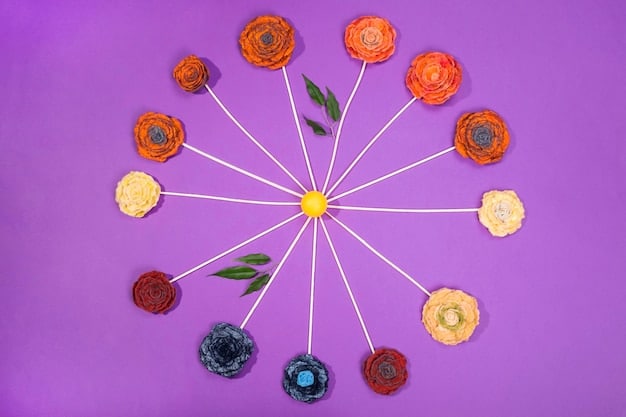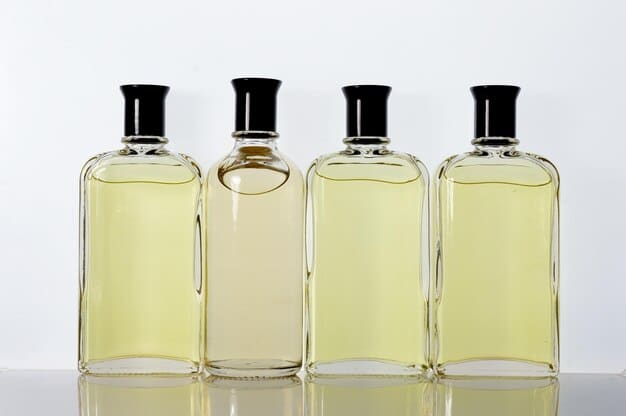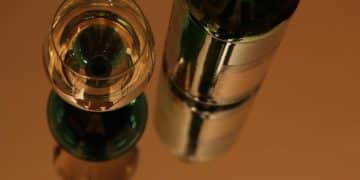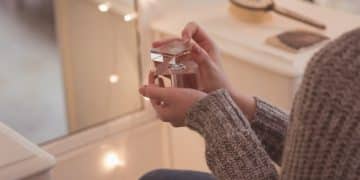Unlock Your Signature Scent: The Art of Fragrance Layering

Fragrance layering is the art of combining multiple perfumes to create a unique and personalized scent, enhancing complexity and longevity while allowing for self-expression through olfactory artistry.
Discover the power of fragrance layering, an expert technique that allows you to blend three or more complementary perfumes, creating a signature scent that reflects your unique personality and style.
The Allure of Fragrance Layering
Fragrance holds a unique power, capable of evoking memories, emotions, and even influencing our perceptions. While wearing a single fragrance can be delightful, fragrance layering adds a new dimension to the olfactory experience. But why would anyone want to combine multiple perfumes? Let’s delve deeper.
Layering isn’t just about mixing scents; it’s an artistic expression, a way to craft a fragrance as individual and complex as you are. It provides unprecedented creative control, from complementing simple perfumes to building more sophisticated, personalized signatures.
Unleashing Your Inner Perfumer
The beauty of fragrance layering lies in its versatility. It allows you to tailor your scent to different occasions, moods, or seasons. You’re not limited by the boundaries of a single bottle; instead, you become the conductor of your own olfactory symphony.
Beyond Basic Scent
Fragrance layering has additional benefits. Combining fragrances can boost their lasting power, as different notes interact and linger on the skin. Some perfumes can also fill the gaps in others, allowing them to work in unique tandem.
- Create unique fragrances that reflect your individual style.
- Adapt your scent to different occasions, moods, or seasons.
- Enhance the longevity and complexity of your favorite fragrances.
- Experiment with different scent combinations and discover new olfactory possibilities.
Fragrance layering is more than just a trend; it’s an exploration of scent, personality, and personal style. It’s about creating an experience that is intimately and uniquely yours.
Understanding Fragrance Families
Before embarking on your fragrance layering journey, it’s helpful to understand the basic fragrance families. These classifications provide a framework for understanding how different scents interact and complement each other. Knowing the difference between oriental and chypre will help you avoid the olfactory equivalent of clashing outfits.
Understanding these families is akin to knowing colors on an artist’s palette. It’s a crucial step toward becoming a skilled fragrance composer so you can combine scents that are harmoniously balanced and appealing.

Common Fragrance Families
There are several primary fragrance families:
- Floral: These scents are dominated by floral notes like rose, jasmine, lily of the valley, and tuberose.
- Oriental: Rich, warm, and often spicy, oriental fragrances feature notes like amber, vanilla, cinnamon, and cloves.
- Woody: Earthy and grounding, woody fragrances are built around notes like sandalwood, cedarwood, vetiver, and patchouli.
- Fresh: Clean, crisp, and invigorating, fresh fragrances incorporate notes like citrus, green tea, marine accords, and aquatic elements.
- Fruity: A mix of sweet and tart, these fragrances include notes of apple, berry, peach, and passionfruit.
- Spicy: Rich and aromatic, fragrances in this family may have notes of cinnamon, pepper, cardamom, and nutmeg.
How to Pair Fragrance Families
While there are no hard and fast rules, some fragrance families tend to pair well together. For example, floral fragrances often blend beautifully with fruity or fresh scents. Oriental fragrances can add depth and warmth to woody or spicy compositions. Fresh fragrances can uplift and brighten floral or fruity blends. When doing **fragrance layering**, it’s all about finding what works best for you.
Understanding fragrance families provides a solid foundation for experimentation, helping you create well-balanced and harmonious layered scents.
Essential Fragrance Layering Techniques
Now that we’ve explored the building blocks of fragrance, let’s dive into practical layering techniques. Like a skilled painter mixing colors, the goal is to create a harmonious blend that enhances individual fragrances for a unique scent.
These are some techniques from the pros for making the most out of **fragrance Layering**.
Start with a Base
Select a foundational fragrance that will serve as the base for your layered scent. This should be a scent you enjoy wearing on its own and that complements the other fragrances you plan to use. This base is your anchor and guide.
Layer in Stages
Apply the base fragrance first, allowing it to dry down before adding subsequent layers. This allows you to better assess how each fragrance interacts with one another. Layering should be a gradual process.
Consider Fragrance Concentrations
Fragrance concentrations vary from light eau de colognes to potent parfums. As a general rule, layer lighter concentrations on top of heavier ones. This helps prevent the lighter fragrances from being overshadowed.
Layering methods
Here are some more advanced methods of layering you can make use of when building your perfume.
- In-air layering: Spraying both fragrances into the air and walking through the resulting cloud.
- Direct skin-to-skin pairing: Spraying both perfumes onto the same area of the skin.
- Varying placement: This method involves spraying each fragrance on a different part of the body.
Experimentation is key to discovering your perfect layered scent. Don’t be afraid to try different combinations and techniques until you find something that resonates. The only limit is your imagination.
Complementary Scent Profiles for Layering
Choosing the right fragrance profiles is essential for successful layering. Look for scents that complement each other, enhancing their individual characteristics while creating a harmonious whole. These combinations are based on classic pairings and a foundation of scent theory.
By understanding how different scent profiles interact, you are better positioned to devise combinations that are not only unique but beautifully balanced.

Floral and Citrus
Combining floral and citrus fragrances creates a bright, uplifting scent that’s perfect for daytime wear. The citrus notes add a zesty freshness to the floral sweetness, making it feel more vibrant and energetic. Notes like orange blossom, bergamot, and grapefruit work particularly well with roses, jasmine, and lily of the valley.
Woody and Oriental
Woody and oriental fragrances create a warm, sensual, and complex scent profile that’s ideal for evening wear. The woody notes provide a grounding earthiness, while the oriental notes add richness and spice. Try pairing sandalwood or cedarwood with amber, vanilla, or patchouli.
Fruity and Spicy
Pairing fruity and spicy fragrances creates a playful, intriguing scent that’s perfect for making a statement. The fruity notes add a touch of sweetness, while the spicy notes bring warmth and complexity. Apple, berry, or peach notes pair exceptionally well with cinnamon, cardamom, or cloves.
Green and Musk
Combining green scents like galbanum or green tea with musk results in a clean, fresh, and slightly sensual profile. The musk adds depth and longevity, while the green notes provide a crisp, invigorating appeal.
These are just a few examples of complementary scent profiles. Don’t be afraid to experiment and discover your own unique combinations. With a little creativity, you can create a layered fragrance that’s truly one-of-a-kind.
Mistakes to Avoid When Layering Perfumes
While fragrance layering can be a rewarding experience, it’s easy to make mistakes that result in a clashing or muddled scent. There are a number of errors novice and experienced perfumers alike can make, and knowing what to avoid can save your nose.
Here are some common pitfalls to avoid when layering perfumes, to ensure your scent creations are as polished and professional as possible.
Overlapping Similar Notes
Layering too many fragrances with similar dominant notes can lead to a scent that’s overwhelming and lacks depth. For example, layering multiple floral fragrances with strong jasmine notes can create a cloying, heavy scent profile.
Ignoring Fragrance Strengths
As mentioned earlier, fragrance concentrations play a crucial role in layering. Applying a light eau de toilette over a potent parfum can result in the lighter fragrance being completely overshadowed. Always start with the heavier concentration and layer lighter scents on top.
Blind Layering Multiple New Scents
It might seem like a good idea to buy three unseen scents and mix them all on arrival. However, you risk making a mistake and having to return three different perfumes instead of just one. Get one new and one old perfume to try blending first.
Discounting Body Chemistry
Your body chemistry influences how a fragrance smells on your skin. What smells amazing on a friend might not work as well on you. Always test fragrance layering combinations on your own skin before committing to them.
Adding Too Many Fragrances
While there’s no strict limit to the number of fragrances you can layer, starting with two or three is a good idea. Adding too many scents can create a muddy, indistinct fragrance profile. Remember, simplicity can often be more effective.
By avoiding these common mistakes, you can ensure that your fragrance layering endeavors result in beautifully balanced, unique, and personalized scents.
Examples of Successful Fragrance Layering Combinations
To inspire your own fragrance layering experiments, let’s explore some successful combinations that showcase different scent profiles and layering techniques. These options are only guidelines; remember to always experiment so you can find the absolute favorite for your unique style.
These examples provide a starting point but don’t hesitate to experiment and adapt them to your personal preferences.
Floral and Fresh
Start with a base of Jo Malone’s “Peony & Blush Suede,” a delicate floral fragrance with notes of peony, red apple, and suede. Layer over it with Diptyque’s “Eau Rose” for added freshness and a touch of greenness.
Woody and Oriental
Begin with Tom Ford’s “Tobacco Vanille,” a rich oriental fragrance with notes of tobacco leaf, vanilla, and spices. Layer over it with Byredo’s “Gypsy Water” for a woody, earthy contrast that adds depth and complexity.
Fruity and Spicy
Use Jo Malone’s “Blackberry & Bay” as a base, a fruity fragrance with notes of blackberry, grapefruit, and bay leaf. Layer over it with Serge Lutens’ “Fille en Aiguilles” for a spicy, woody aroma that adds warmth and intrigue.
Clean and Powdery
Start with a base of Prada’s “Infusion d’Iris,” a clean, powdery fragrance with notes of iris, mandarin orange, and neroli. Layer over it with Narciso Rodriguez’s “For Her” for a musky, sensual depth that adds warmth and complexity.
These are just a few examples of the endless possibilities that fragrance layering offers. Don’t be afraid to experiment, explore, and create your own signature scent that reflects your unique personality and style.
| Key Point 🔑 | Brief Description 📝 |
|---|---|
| 🎨 Techniques | Start with a base, layer gradually, and vary fragrance placement. |
| 👃 Scent Families | Understand floral, oriental, woody, fresh, and fruity profiles for harmony. |
| 🚫 Mistakes | Avoid similar notes, weak-over-strong layering, and body chemistry neglect. |
| ✨ Creativity | Experiment to find unique scents that reflect your personal style and mood. |
FAQ
Fragrance layering is the technique of combining two or more perfumes to create a unique, personalized scent that is different from any single fragrance worn alone. It’s an art of olfactory blending!
Start by understanding the fragrance families (floral, woody, oriental, fresh). Choose scents with complementary notes that enhance each other. Experiment with combining fragrances you already love to see what works.
While you can experiment with any scents, some combinations work better than others. It’s best to avoid layering fragrances with very similar dominant notes, as this can create a muddled, overwhelming scent. Always test your creations!
Apply the heavier, more potent fragrance first, followed by the lighter one. This prevents the lighter scent from being overshadowed. You can also try spraying one fragrance on your wrists and another on your neck for a nuanced effect.
Layering different fragrance types can help increase longevity, so try it. Also, applying fragrance to moisturized skin can help it last longer. You can also carry small atomizers of your layered scent for touch-ups throughout the day.
Conclusion
Mastering the art of fragrance layering unlocks a new level of personalization in your scent journey. By understanding fragrance families, exploring layering techniques, and avoiding common mistakes, you can create a signature scent that is truly your own. Embrace the process, experiment fearlessly, and let your creativity guide you in crafting an olfactory masterpiece.





